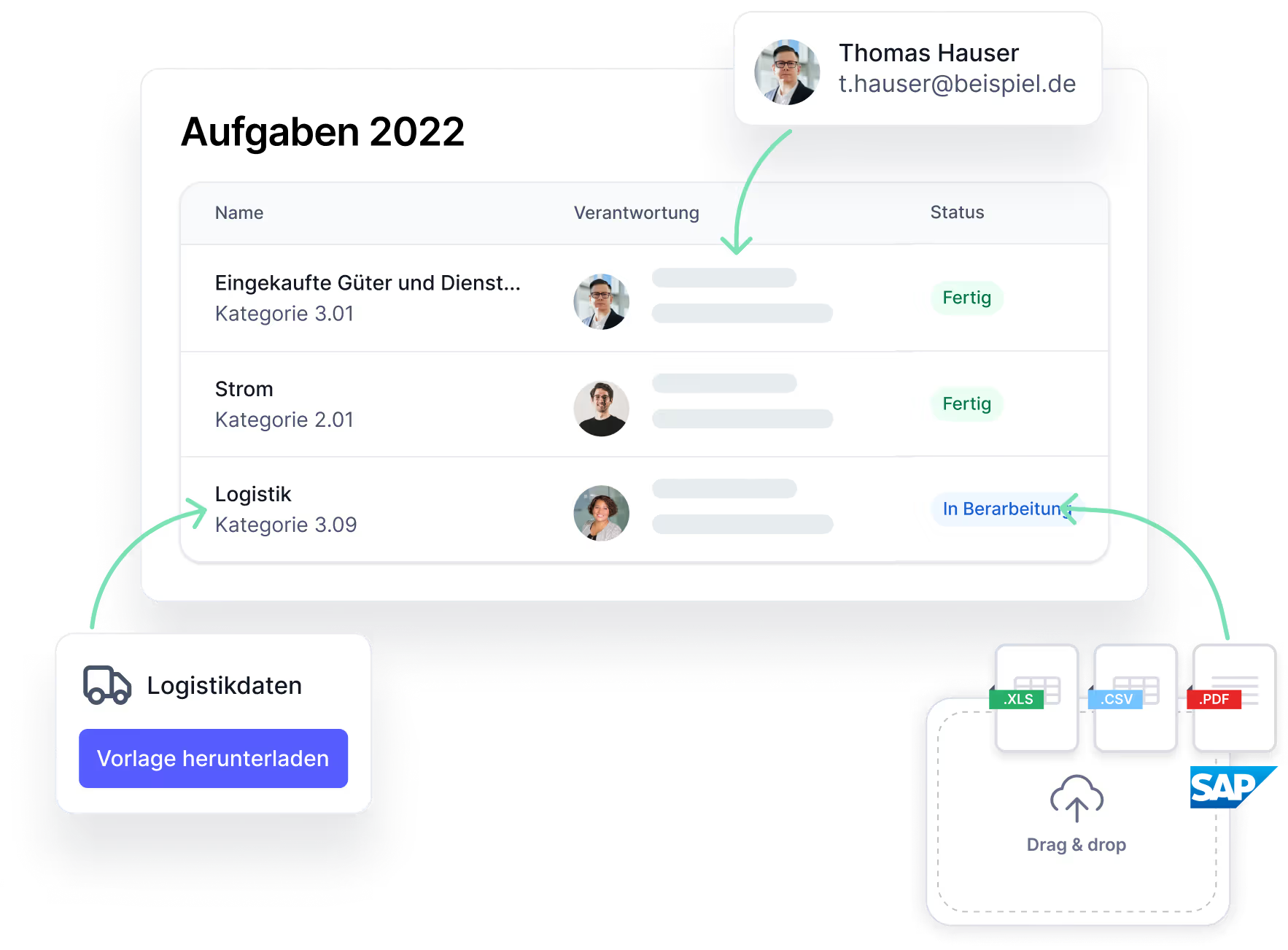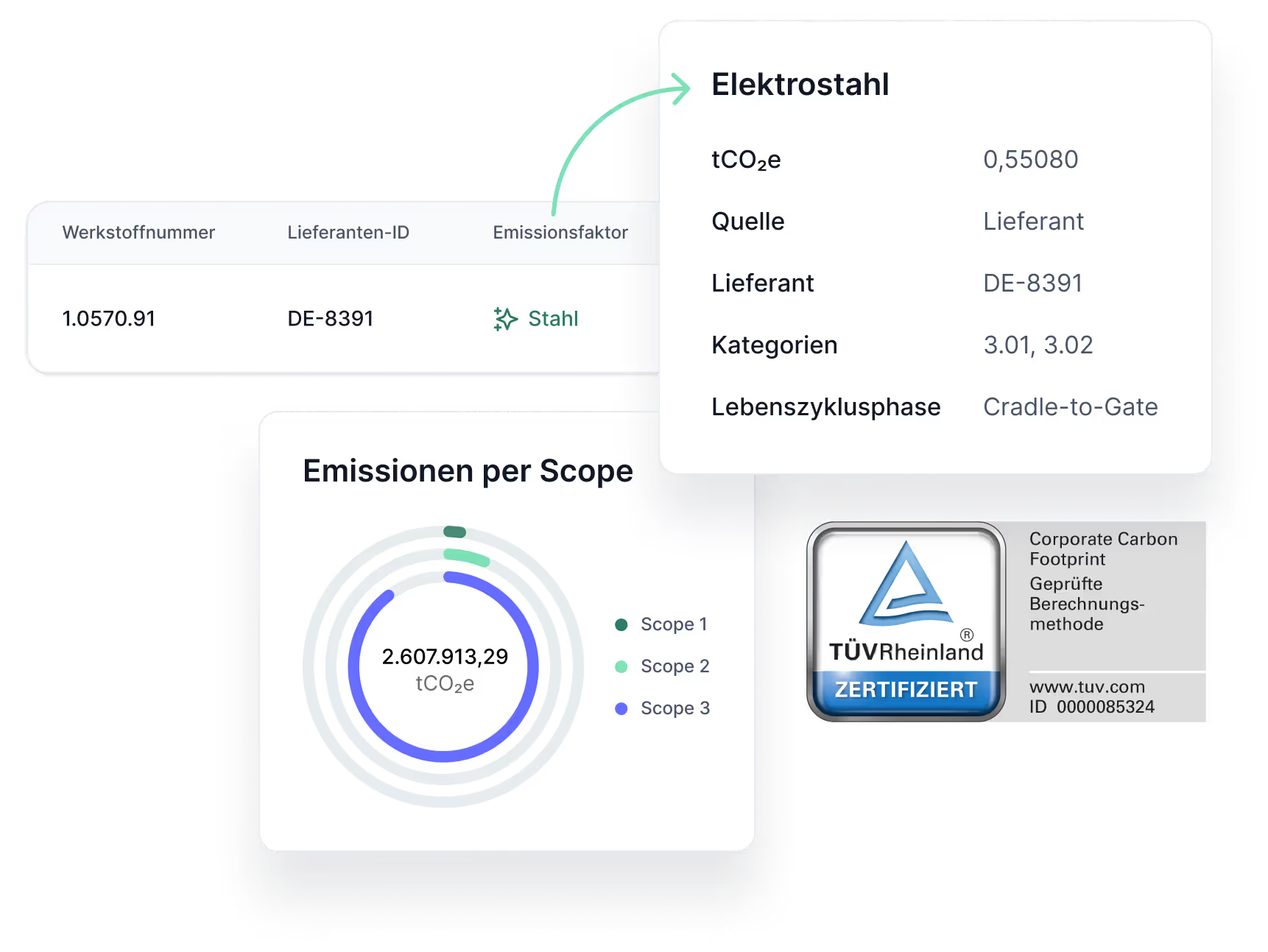Create sustainability reports in line with the VSME standard. Flexibly select relevant data points and export the final report according to VSME requirements. Tailored to the needs of manufacturing SMEs.



Flexibly structure relevant ESG data based on your internal materiality criteria.
Identify optimization potential in your ESG data and define targeted measures to improve your sustainability performance.
Central integration of CCF, PCF, and VSME data.






















Implementation, regulatory details, and more. Find your answers here.
VSME+ refers to an approach in which companies apply both modules of the VSME standard and extend them with additional company-specific indicators or disclosures.
Yes, companies are free to decide which reporting requirements from the comprehensive module they want to apply. If certain data points are not reported, the VSME assumes that they do not apply to the company.
The VSME is the voluntary standard for Small- and Medium-sized Enterprises. In the context of the CSRD and specifically through the EU’s Omnibus proposal, the VSME takes on a new function: it is intended to serve as a so-called value-chain cap. This means that information beyond what is required by the VSME generally does not need to be mandatorily passed along the supply chain.